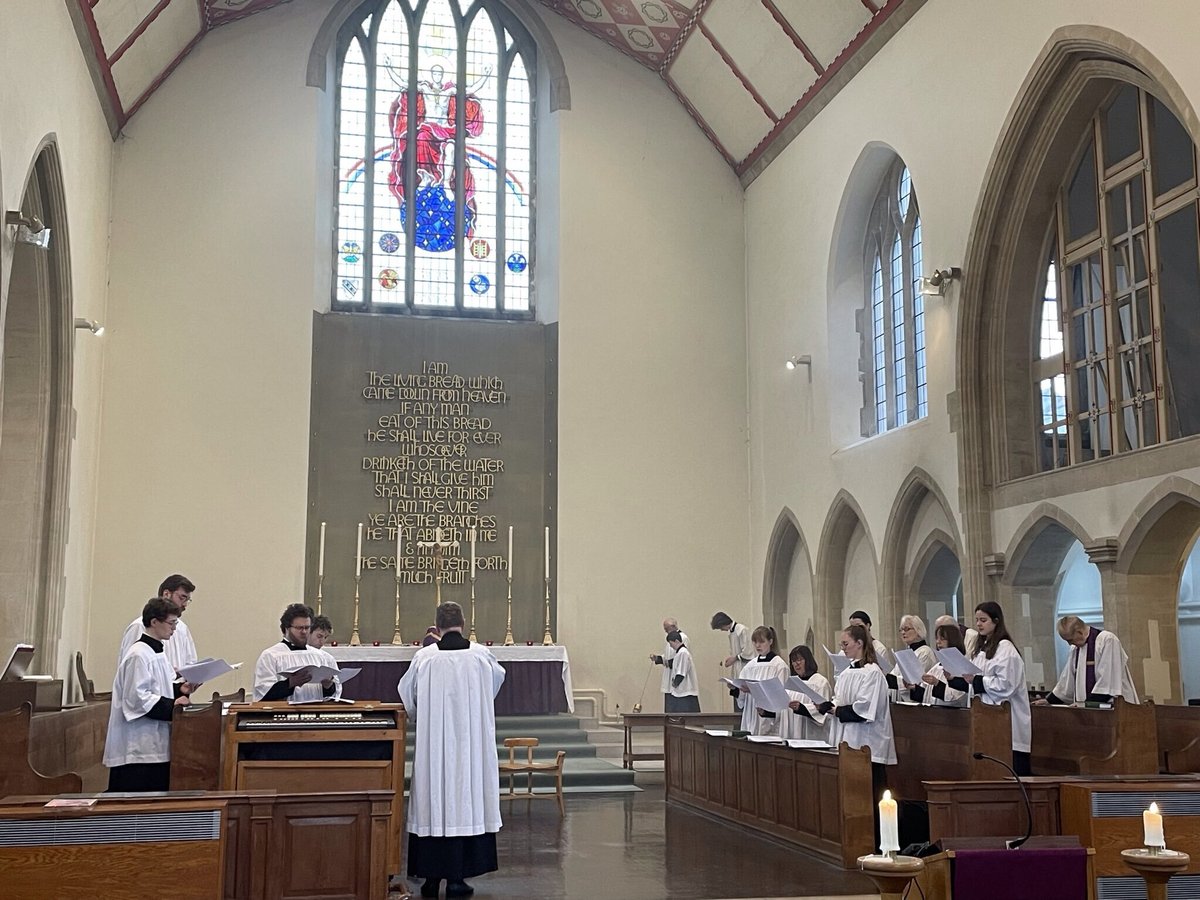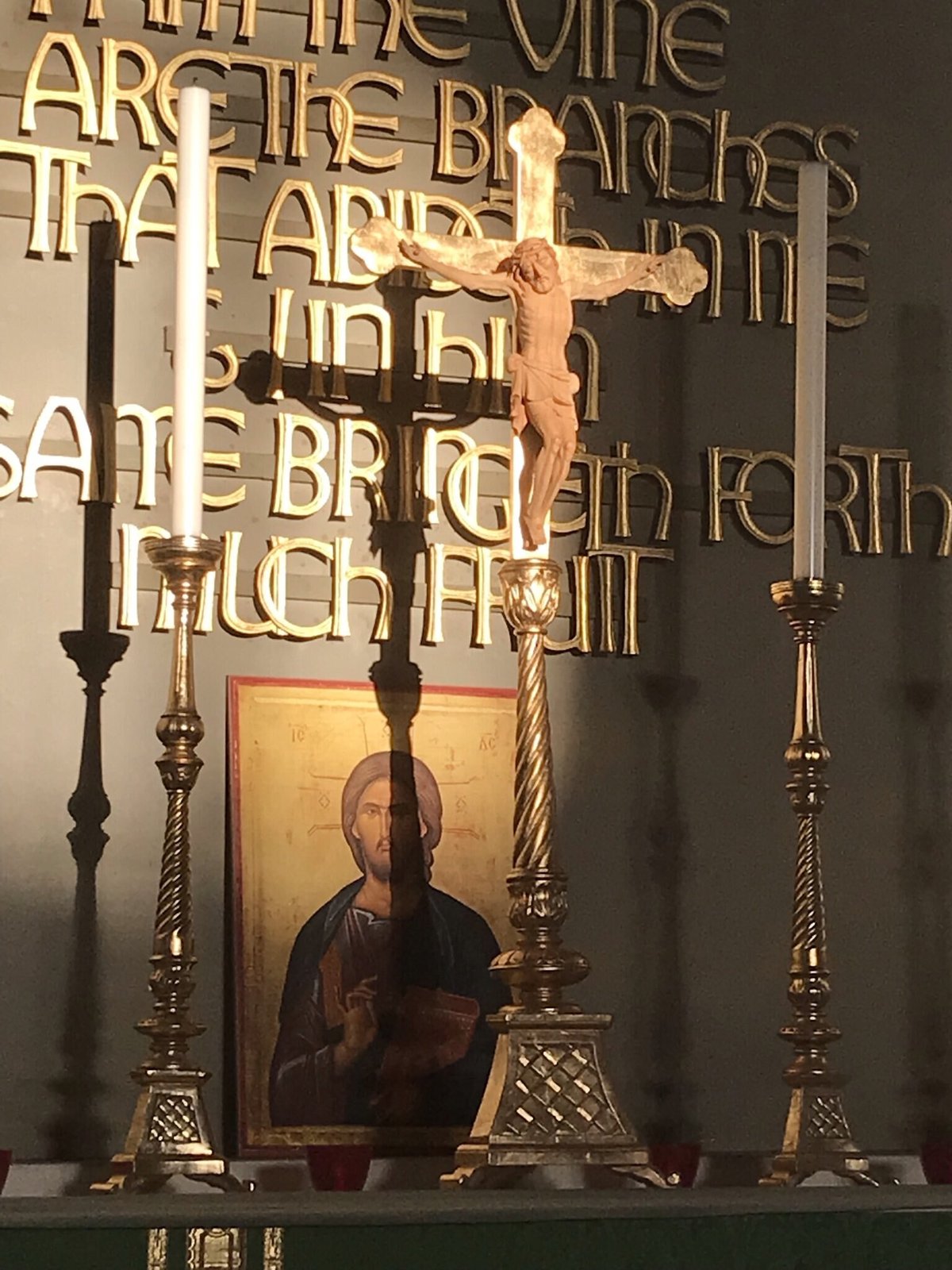Music and Holy Week
In the second of a series of music and Holy Week reflections, we spoke with Timothy Hill, Director of Music at St Martin in Roath to explain how music can enhance liturgy and bring us closer to the drama of Christ’s Passion.

Music is the heart of everyday life – there literally is a song for every occasion and individuals will associate memories or loved ones with particular songs. The church is no different - Music is integral to its liturgy, and none more so than during Holy Week.
At St Martin in Roath, the clergy and musicians work well in advance to plan the liturgical music for the Holy Week liturgies. Although music is integral to the Liturgy, it is very much its servant. We strive to ensure that the music enhances the liturgy and does not become a distraction – almost a concert with some liturgical actions attached to it!
We aim to take full advantage of the large space and use our resources to the fullest when planning the music. It is always a challenge to get the right ‘noise’ for each liturgy.
Music during Holy Week

Palm Sunday begins with the strains of Malcom’s Ingrediente Domino, a choral fanfare announcing Jesus’ entry to Jerusalem. The processional hymns reflect the triumphant tone of the Liturgy of the Palms. As in many other churches, the tone of the Mass which follows is reflected by the use of restrained polyphony and plainsong.
Similarly the Mass of the Lord’s Supper begins in a triumphant mode. The organ sounds, the Gloria is proceeded by a fanfare and choir and congregation join in music especially written for them to sing. The tone however quickly changes, and the moving foot washing ceremony is punctuated with the singing of Ubi Caritas to a setting by Maurice Durufle. The Mass ends in darkness with the choir singing the Taize chant ‘Stay here’ as the faithful remain to pray at the Altar of Repose.
Although music is integral to the Liturgy, it is very much its servant.
The Good Friday liturgy is a simple yet moving celebration. The hymns are sung unaccompanied. The St John Passion is sung to a setting by the Spanish composer Victoria, and the same composers setting of the Reproaches is used as the faithful venerate the Cross.
The Easter Vigil begins with Cantor and congregation joining in the great Exultet. The choir sings the beautiful setting of Psalm 42 by Palestrina in the candlelit atmosphere as we await the thrilling sounds of the organ announcing the Gloria and reintroducing the Alleluia to the Liturgy.
The Easter Sunday Mass is, as would be expected, filled with triumphant and exuberant music to match the joy of the Resurrection. A particular highlight is the alternatim setting of the Easter sequence ‘Victimae Paschali’. The congregation raise the roof as the Mass concludes with the ‘Regina Cœli’, complete with fanfares and soaring descant.
It is our hope that this ‘noise’ will inspire the faithful to continue their journey as Easter people, enriched and renewed by their celebration of the Lord’s Passion, death and Resurrection.
Watch Bishop Rowan Williams' talk on the purpose of music in liturgy
About St Martin in Roath
St Martin in Roath is noted for its excellence in music and liturgy. Music is central to the mission and ministry of St Martin in Roath. Mass on Sundays and feast days are sung by the liturgical choir who lead the congregation in worship, drawing upon a wide repertoire ranging from ancient chant through to contemporary works.
If you would like to support the mission of St Martins, please become a Friend of St Martin Music. Money raised is used to maintain and expand the high standards of liturgical music making enjoyed at St Martin in Roath. They have provided over 45 musical scholarships since its inception and has ambitious plans to ensure that such opportunities are available in the future.Friends of St Martin Music | St Martin in Roath
Visit St Martin in Roath this Holy Week. A full list of services is on their website News & Events | Wales | St Martin in Roath Church in Wales